Feeding fish in aquariums is the most entertaining and the most important part of aquarium fish care that affects the health of fish and the entire aquarium.
Buy live fish food locally on Craigslist:
or buy fish food flakes on Amazon (paid link):
Most problems in aquariums arise from overfeeding the fish.
Overfeeding occurs when uneaten or leftovers of fish food become waste, poisoning aquariums.
Notice the reaction of my dwarf guppies when food is given to them at an unscheduled time.
They never touch it!
The whole feeding is wasted - overfeeding.
Repeated overfeeding will cause excessive waste to accumulate that no filters or water changes can handle.
I learn through experiments how often, how much, and what food my fish like among other things.
Starting from a pinch of food 2 times a day, I've been gradually reducing the frequency of feeding every year, allowing time for fish to get used to every new feeding schedule with minimal stress.
Here is one of my sustainable aquarium gardens populated with plants, filamentous algae, pond snails, and seed shrimp where guppies were given food once a month through 2017-2018.
Here you can see a male guppy nibbles on filamentous algae.
Which grows extremely fast and eventually takes over the entire aquarium.
For that reason, I stopped using filamentous algae in all my aquariums.
Here guppies feed on a wilting leaf of dwarf water lily.
Guppies feed on what grows in the aquariums as they feed in Nature.
I thought they would jump out of water for a pinch of fish food after one month of fasting.
Isn't it what hungry fish should do?
Let's see how my dwarf guppies respond to being given food after one month of no feeding in these 3 sustainable aquariums.
I give them the same homemade fish food they used to feed on all their lives.
Watch their reaction.
In all 3 aquariums, guppies swim away as soon as they notice me.
This time I give them a very generous pinch of food.
They deserved it after one month of fasting.
There is no way they cannot see the food.
Fish approach the food slowly after I moved away.
And start picking some flakes certainly without any rush.
They don't look or act hungry at all.
The same behavior in all 3 aquariums.
One whole month of no feeding and yet, they are not hungry...
And some of the guppies do not even look for food on the surface!
Understandably...there was nothing to look for up there for a whole month.
Now, let's see how fish in aquariums with daily feeding respond to food given at a regular scheduled time.
Guppies in these aquariums are already waiting in obvious anticipation for feeding.
They are jumping out of water for the same pinch of homemade fish food flakes.
It happens in all aquariums with regular daily feeding.
It is common behavior of fish in aquariums, most likely including yours too :)
This fish should not be acting that hungry - they are getting food every day!
They are certainly not starving, but...that is the impression I am getting.
And again, these aquariums also have filamentous algae, snails, seed shrimp - everything available to the fish just as in the aquariums with once a month feeding.
Young and adult, males and females, breeding couples and schools of fish - all of them respond to daily feeding in the same manner.
Acting as if they are hungry!
Observations for guppies in aquariums with regular feeding once or twice a day, every other day, 2 times a week, once a week reveals that fish exhibit this hungry behavior in anticipation of food during feeding time.
Fish of all ages nibble on everything growing in aquariums all day long regardless of how often and what types of food we give to them at feeding times.
Here you can see toothless young guppies nibble on eggs of pond snails.
That high protein live food grows in all my aquariums all the time.
And I still get a lot of snails ;)
And I use adult snails for making fish food flakes.
Many fish feed on different types of algae.
Which is also a great source of protein used by bodybuilders - I am talking about spirulina ;)
Well, I don't grow spirulina...
Nevertheless, here you can see a young male adult guppy nibbles on hair algae growing on leaves of dwarf hairgrass.
Duckweed is another high protein food source growing in my aquariums.
Fish nibble on all those different plants growing in aquariums.
This fresh food is always available for fish whether you feed them or not.
This food is always there for fish to feed on.
And fish loves live food!
Daphnia, cyclopes, any tiny aquatic critters living in aquariums are live food for fish.
In this example, a female guppy snacks on seed shrimp.
Let's get a closer view.
Here you can see the mama guppy snacking on tiny seed shrimp :)
Fish continuously explore aquariums all day long and find a variety of food on the go.
By feeding fish at certain times, we teach our fish to look for food at the feeding time in a feeding spot even if there is plenty of food in aquariums.
Through experiments, I found feeding my guppies twice a week is sufficient in aquarium gardens of this size.
Less frequent feeding is required in larger aquariums with more plants and more live food available for fish.
There are many variations of all kinds of fish food to choose from in pet stores - which is a great starting point of choosing food for your fish.
Letting fish try different food allows you to see what the fish likes the most.
Let your fish choose the food!
I feed my guppies with live food and homemade fish food flakes.
Use of plants and everything else growing in aquariums as main ingredients for making fish food is simple and highly effective.
These plants grow faster than fish eat them.
So, I just take some of the fresh plants with whatever live critters may come with it and let them dry.
Removing part of the plants and critters from the tank makes space for new plants and critters to grow.
I even dry snails for fish food.
And snails breed fast ;)
Let me show you an adult scud here.
My dwarf guppies eat smaller size young scuds that also breed right in this aquarium.
It takes a couple days for plants and critters to dry at a normal room temperature whether you blend them or just leave it as it is.
Breaking snail shells helps to dry them faster.
Crumble dry plants.
Feed it to your fish as it is or mix it with any other dry fish food.
Store it for later feeding the same way as any dry food.
This way, I get a steady supply of fish food that my fish is accustomed to feed on even before I made the food :)
Feeding fish in aquariums populated with plants and living critters is supplemental.
I've been feeding fish twice a week for the past year in addition to all the plants and critters the fish can get in aquariums.
It seems to be working well for fish and the whole aquarium ecosystem thrives all year around with minimal effort on my part.
I don't use filters, no air pumps, and I do not change water.
Here you can see a sustainable aquarium garden with fish, critters, aquatic and land plants all thriving in one ecosystem.
But it is not the point.
Avoiding overfeeding keeps your fish and aquariums healthy better than anything else.
Growing food for your fish in aquariums with the fish does the magic.
Have fun and happy aquarium gardens :)






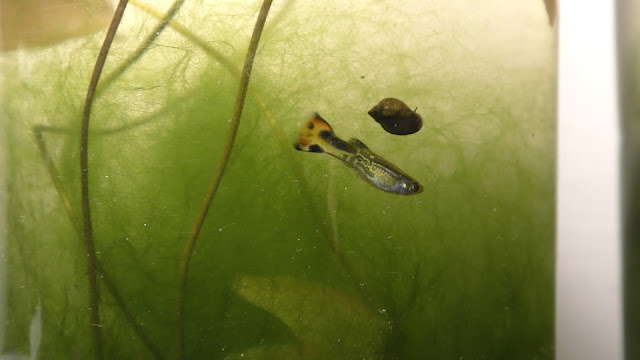











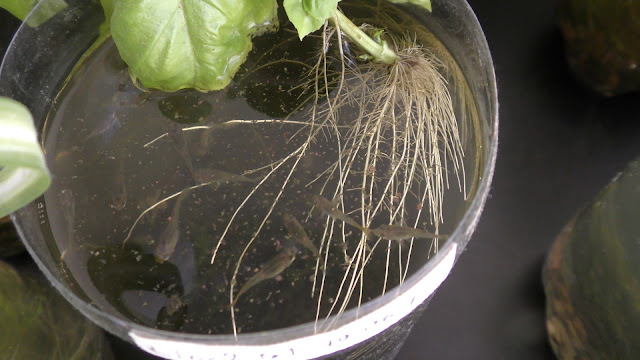


























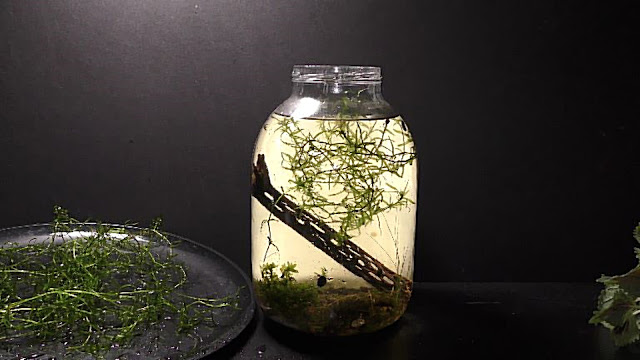


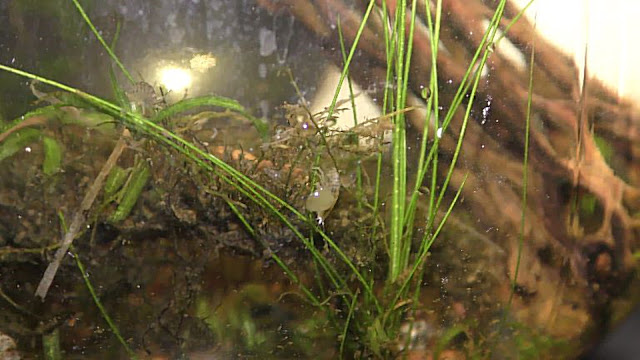












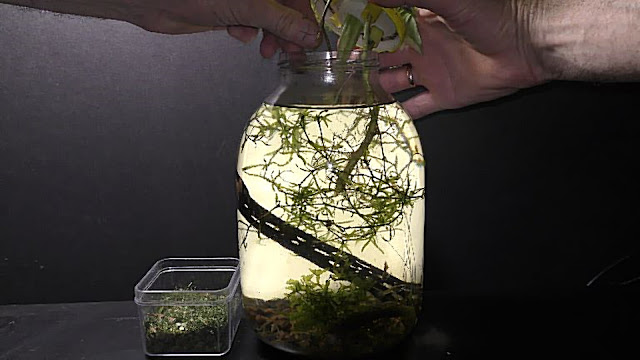
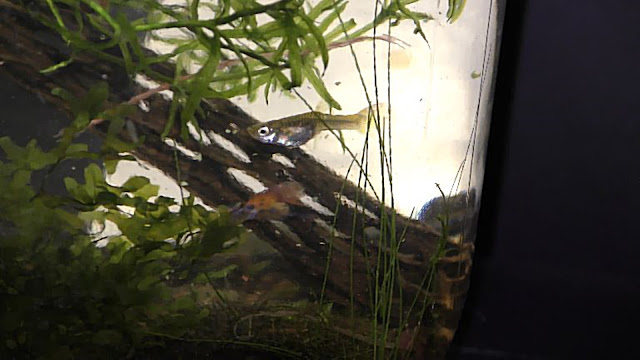

No comments:
Post a Comment